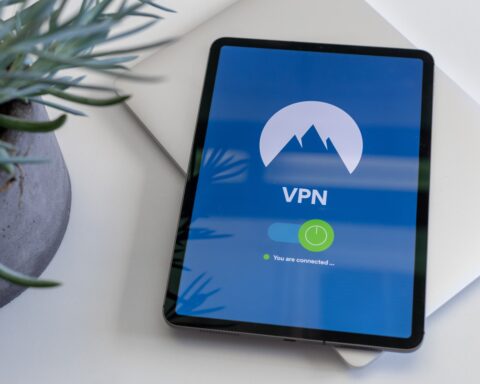There are many sneaky hacker tools and programs that could find their way to your computer. A keylogger is one of the most dangerous programs as it records each and every stroke you make on your laptop’s keyboard.
In this guide, we take a look at what keyloggers do, how they get onto your computer, how to detect and get rid of them.
What is a Keylogger?
Leading cybersecurity firm McAfee describes a keylogger (short for keystroke logger) as a “software that tracks or logs the keys struck on your keyboard, typically in a covert manner so that you don’t know that your actions are being monitored. This is usually done with malicious intent to collect your account information, credit card numbers, usernames, passwords, and other private data.” That means that hackers can get all your usernames, passwords, account numbers and PIN codes.
There are also legitimate uses of keyloggers. Parents can use them to monitor their children’s activities online. Authorities can use them to track and analyze cases associated with the use of personal computers. Employers can use them to ascertain that their employees are working and not just surfing the web.
Nevertheless, keyloggers pose a big threat to your online life. Especially, if you have a compromised device as there’s no amount of encryption that can save you.
Keyloggers are programmed to run on your computer as soon as you switch it on. Besides, they don’t slow down a computer making them hard to identify.
There are two different types of keyloggers – software and hardware.
Software keyloggers are keyloggers that are anonymously configured into your computer’s program and run in the background undetected while sending all your information to the hacker.
Hardware keyloggers are keyloggers in the form of USB sticks or other hardware. They are inserted at the back of the CPU and operate by filming your keystrokes. Although hardware keyloggers do exist and are used, they aren’t as common as software keyloggers.
How Can a Keylogger Find its Way Into Your Computer?

Keyloggers are spread the same way that malicious programs are spread. Apart from legitimate use cases of keyloggers or in instances where they are installed by a jealous partner or spouse, a keylogger can be installed into your computer as part of a trojan.
A trojan is software that gains access to your computer’s system by pretending to be harmless but is designed to do something damaging. In this case, recording crucial information by tracking and logging each key struck on your keyboard. A trojan can be an attachment that’s received via email, text, social media or instant messaging. You can also get infected by visiting a website.
Additionally, the downloaded trojan can provide an opening for the hacker to get more malware through your computer’s firewall. Once the keylogger has recorded your keystrokes in a file saved on your computer, it will use a separate program to send out that information over the internet. And because malware analysts can trap the file and track the hacker, the information rarely gets sent straight to the hacker. Instead, the information is encrypted and then shared on a public message board where the cybercriminal can anonymously download the data.
Anti-spyware and antimalware’s tend to overlook keylogging because there are quite a number of legitimate programs that use keyloggers. It’s therefore hard to prevent keyloggers from getting into your computer.
Additionally, there are those that manage to sneak in past antimalware programs during system updates. Because of these reasons, it’s very difficult to protect your computer from keyloggers. The only way to protect yourself is to avoid downloading and installing software unless you are sure of the source.
How to Detect a Keylogger

“How to detect a keylogger on your computer?” is a commonly asked question among cybersecurity conscious individuals. The simple and short answer is to open your task manager and look at the processes that are running.
Unfortunately, most of the background processes have very obscure names. It can be hard finding a keylogger because hackers don’t just name them keyloggers. Windows will always show all the programs that are running in the background. If there’s a program that isn’t familiar to you, you can do a simple Google search. Hopefully, you will find articles written on the different names used for keyloggers.
Another way that you can detect a keylogger is by monitoring your computer’s network connections using a firewall. Remember, keyloggers work by collecting and sending your logs to a remote location. That means that an internet connection is used to send the encrypted file. You can make use of applications such as Windows Firewall Control to check the programs that are using your network connection. In addition, you can use the program to set rules to prevent unauthorized or unknown programs from connecting to the internet. However, with this method, there’s no guarantee that you will have blocked the right programs.
How to Get Rid of Keyloggers
Keyloggers were introduced to keep track of what employees were doing on company computers. They have since become a tool that hackers use to access people’s crucial information. Today, keyloggers are also becoming very common with digital marketers as they use them to monitor the activities of visitors on their sites.
Getting rid of keyloggers is never easy as you might be forced to uninstall and reinstall your operating system to completely get rid of it. However, by investing in a good antikeylogger software, you will be one step ahead of protecting your computer and your digital footprint. A good antikeylogger should be able to audit all the processes running on your computer. From the background services, apps running to the BIOS, network settings, browser settings, plug-ins, and operating systems.
A lot of the keylogger software available tend to be rootkit viruses. Get a good antikeylogger system and an anti-rootkit program. This will help you to stop the installation of keyloggers.
Most of the top antivirus companies such as Bitdefender, McAfee, Kaspersky, and Norton offer antikeyloggers and anti-rootkit programs. Aside from installing a good antikeylogger and anti-rootkit program, avoid downloading just about any app you come across. Also, always ensure that your software is up to date.






